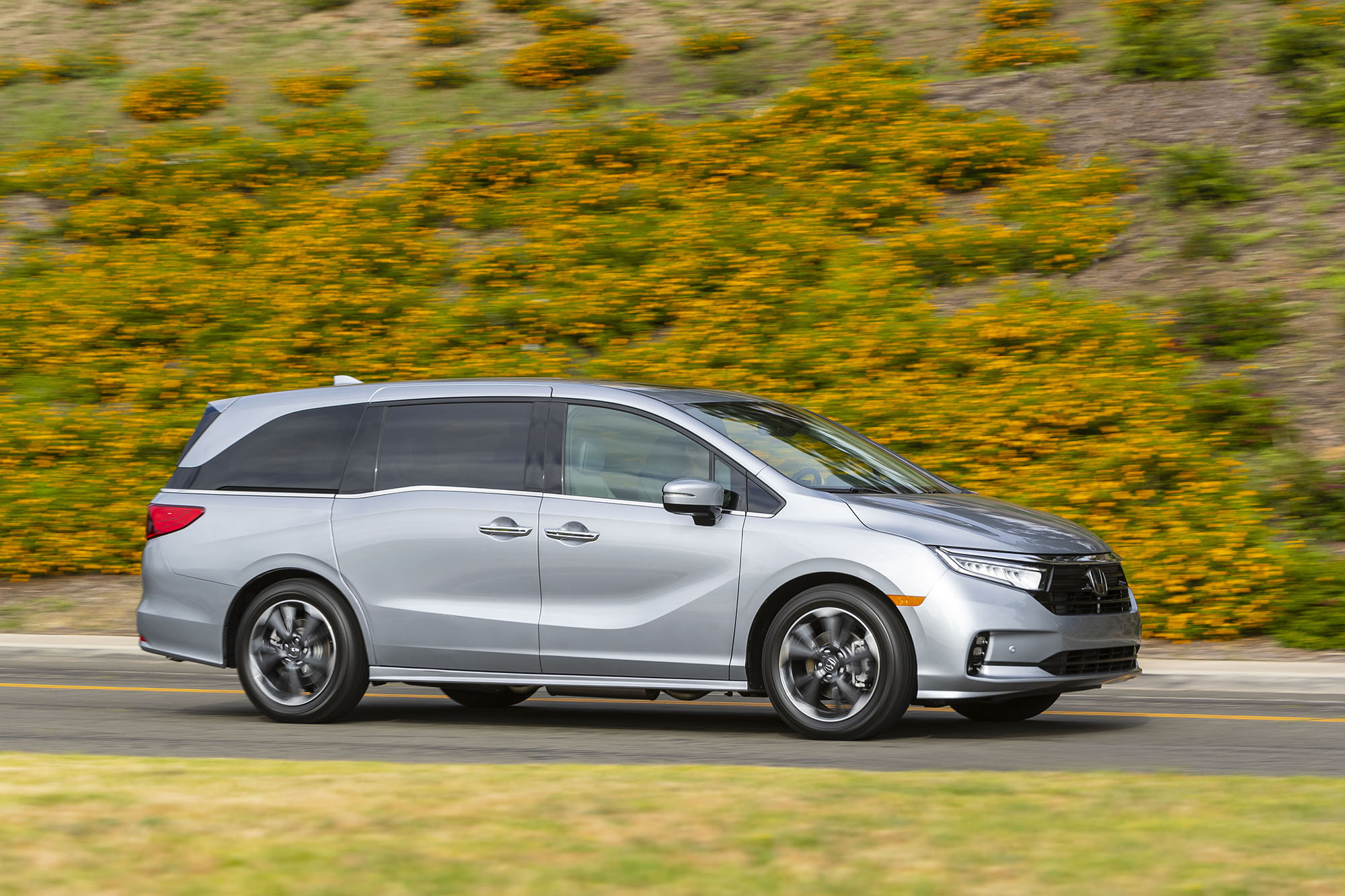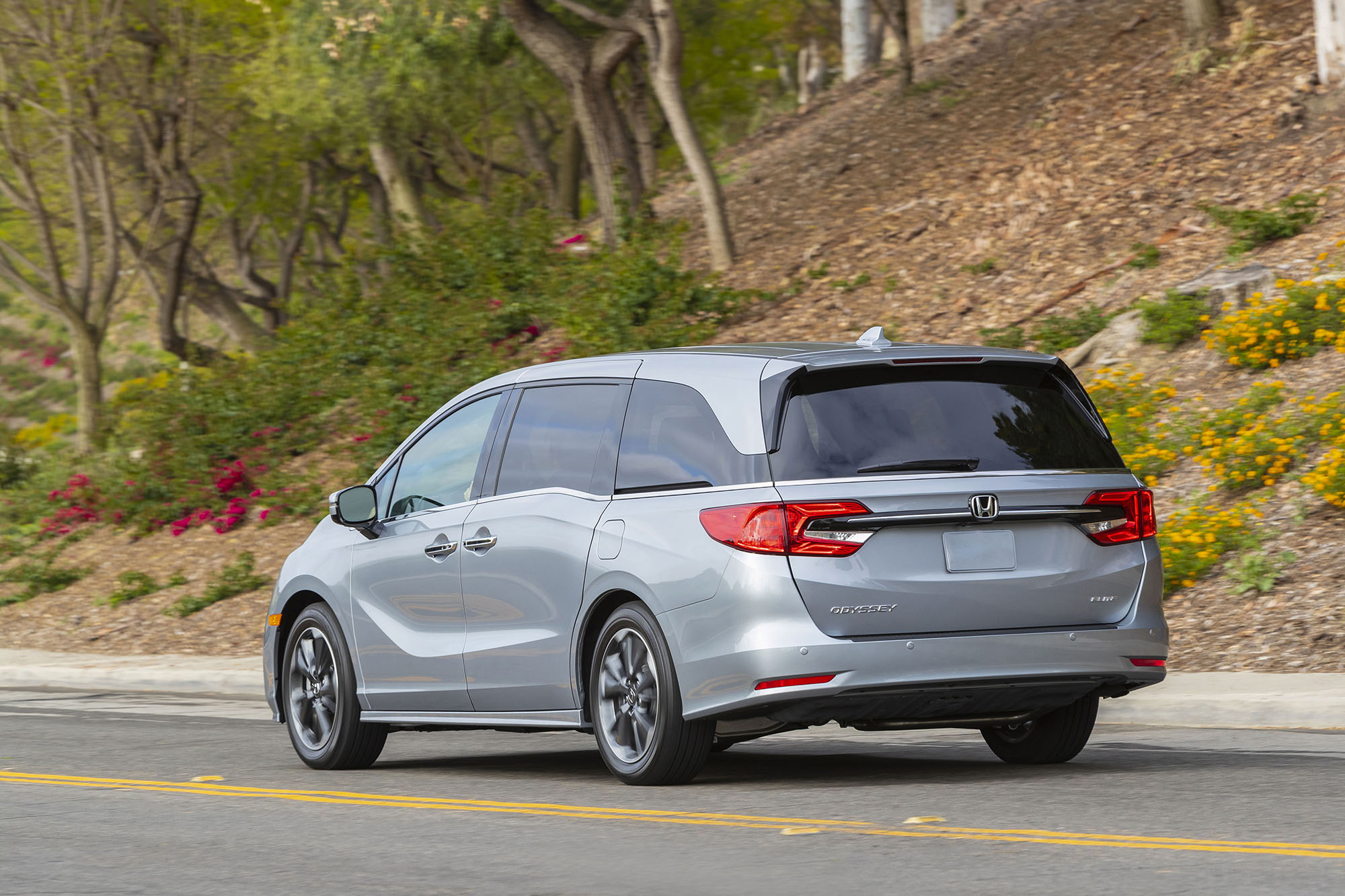Compared: 2024 Chrysler Pacifica vs. 2024 Honda Odyssey
Little separates these two family-oriented vehicles.
 Honda | Chrysler
Honda | Chrysler
The minivan segment is a small one, containing just four models. Of those options, the Chrysler Pacifica and Honda Odyssey are perhaps the closest in terms of price, powertrain, interior space, feature set, and fuel economy, which can make deciding between the two difficult.
 Chrysler
Chrysler
The Vans Have a Similar Price
The base Pacifica, known as the Touring, has front-wheel drive and starts at about $41,000. Moving up to the Touring L or better puts all-wheel drive (AWD) on the table, but it'll cost you nearly $3,000 for AWD on top of every trim level's FWD price.
Chrysler offers a plug-in hybrid model, too, for about $53,000 before incentives, but that powertrain puts it in another category, so it isn't the focus of this comparison.
 Honda
Honda
The Odyssey, starting at about $40,000, has an advantage in price over the Pacifica, if only a slight one. It boasts a 3.5-liter V6 making 280 horsepower, which is nearly as powerful as the Pacifica's 287-hp 3.6-liter V6.
But if AWD is a must-have, the choice between these two vans is easy: The Honda doesn't offer it.
 Chrysler
Chrysler
You Get More Goods With the Pacifica
On its base minivan, Chrysler provides a few things that Honda doesn't, such as second-row underfloor storage bins and rain-sensing wipers. The Pacifica's touchscreen is also larger, measuring 10.1 inches to the Odyssey's 8.0, and it supports wireless Apple CarPlay and Android Auto connectivity, whereas its competitor's system requires a cable.
That's not to say the entry-level Odyssey is lacking. It comes with heated front seats, adaptive cruise control, blind-spot monitoring, remote start, proximity-key entry, push-button ignition, and power sliding doors — just as the Pacifica does. Buyers can get the Pacifica with seven or eight seats, while every Odyssey comes with eight. The latter's Magic Slide second row is highly configurable, though, allowing owners to slide, tilt, and remove seats at will.
 Honda
Honda
That said, if you're looking for a passenger van that can double as a cargo hauler, the Pacifica is probably the way to go. While both vehicles make it easy for owners to stow the third row into the floor, only the Chrysler extends that functionality to the second row. The Odyssey's seats must be lifted out of the vehicle and stored somewhere, and even then, the Magic Slide base remains in the van, so you won't have a flat-load floor.
As for each van's rear-seat entertainment options, Honda provides one high-mounted 10.2-inch screen to captivate everyone in the back, while Chrysler offers the option of giving each captain's chair occupant their own display to watch.
 Chrysler
Chrysler
The Vans Are Equally Thirsty
The fuel-economy estimate for both front-drive minivans is identical, at 19/28/22 mpg city/highway/combined. The AWD Pacifica does a little worse in each area. It offers EPA numbers of 17/25/20 mpg.
All vehicle pricing includes MSRP plus destination charges (set at the time of publication), and will be rounded to the nearest thousand.
Written by humans.
Edited by humans.
 Beth Nichols
Beth NicholsAfter graduating from the University of Michigan, Beth Nichols stumbled into automotive journalism and found her footing, jumping between a few car magazines before going freelance. Her head, once full of useless facts about literature and art history, now holds useless facts about vehicles. She edits, checks, and occasionally creates content for Capital One, and though she understands it’s customary to write a bio in the third person, I don’t like it.
Related articles
View more related articles